Optimal and Suboptimal Architectures of Millimeter-wave Large-scale Arrays for 6G
-
摘要: 波束成形(Beamforming)阵列技术是现代无线电系统的核心使能技术,其发展历程贯穿电磁学理论突破、半导体工艺革新和系统体制迭代3个维度。移动通信的演进进一步驱动了波束成形阵列技术的发展,特别地,混合波束成形阵列技术在5G 3GPP Release 15标准中被确立为5G毫米波通信的关键技术之一。为适应未来6G通信与感知的需求,毫米波波束成形阵列技术将向超大规模(>1 000单元)、智能化(AI赋能)、异构(光电量融合)方向持续演进,为构建泛在智能连接提供核心使能基础。该文主要探讨面向6G毫米波通信的最优和次优大规模波束成形阵列架构。Abstract:
Objective Beamforming array technology is a key enabler for modern radio systems, evolving across three primary dimensions: advancements in electromagnetic theory, innovations in semiconductor manufacturing, and iterations in system architectures. The development of mobile communication has driven the progress of beamforming array technologies. Hybrid beamforming array technology, in particular, was established as a critical solution for 5G millimeter-wave communications under the 3GPP Release 15 standard. To address the needs of future 6G communication and sensing, millimeter-wave beamforming arrays will evolve towards ultra-large-scale (> 1000 elements), intelligent (AI-driven), and heterogeneous (integration of photonics and electronics) architectures, serving as the foundation for ubiquitous intelligent connectivity. This article investigates optimal and suboptimal large-scale beamforming array architectures for 6G millimeter-wave communications.Methods Large-scale beamforming arrays can be classified into three primary types: analog-domain beamforming arrays, digital-domain beamforming arrays, and hybrid-domain beamforming arrays. These arrays can be further categorized into single-beam and multi-beam configurations based on the number of supported beams. Each category includes various architectural variants ( Figure 1 ). Analog-domain beamforming arrays (Figure 2 ) consist of passive and active beamforming arrays. Active beamforming arrays are further divided into Radio Frequency (RF) phase-shifting, Intermediate Frequency (IF) phase-shifting, and Local Oscillator (LO) phase-shifting architectures. Digital-domain implementations (Figure 3 ) include symmetric and asymmetric full-digital beamforming architectures. Hybrid-domain configurations (Figure 4 ) offer various combinations, such as architectures integrating RF phase-shifting phased subarrays with digital beamforming, or hybrid multi-beam arrays that combine passive beamforming networks with digital processing. In terms of performance, the symmetric full-digital beamforming architecture (Figure 5 ) is considered the optimal solution among all beamforming arrays. However, it faces challenges such as high system costs, excessive power consumption, and increased complexity due to the need for numerous high-speed ADCs and real-time processing of large data streams. To address these limitations in symmetric full-digital multi-beam large-scale arrays, an asymmetric large-scale full-digital multi-beam array architecture was proposed (Figure 6 ). Additionally, a spatial-domain orthogonal hybrid beamforming array (Figure 8 ) is proposed, which uses differentiated beamforming techniques across spatial dimensions to implement large-scale hybrid beamforming arrays.Results and Discussions Current 5G millimeter-wave base stations primarily utilize hybrid beamforming massive MIMO array architectures ( Figure 7 ), which integrate RF phase-shifting phased subarrays with digital-domain beamforming. In this configuration, each two-dimensional RF phase-shifting phased subarray is connected to a dedicated Up-Down Converter (UDC), followed by secondary digital beamforming processing. However, this architecture limits independent beam control flexibility, often leading to the abandonment of digital beamforming in practical implementations. Therefore, each beam achieves only subarray-level gain. For mobile communication base stations, the adoption of asymmetric full-digital phased arrays (Figure 6 ), which include large-scale transmit arrays and smaller receive arrays, offers an optimal balance between cost, power consumption, complexity, and performance. This configuration meets uplink/downlink traffic demands while enabling wider receive beams (corresponding to compact receive arrays) that support accurate angle-of-arrival estimation. Theoretically, hybrid multi-beam architectures that combine digital beamforming in the horizontal dimension with analog beamforming in the vertical dimension (or vice versa) can reduce system complexity, cost, and power consumption without degrading performance, potentially outperforming current 5G mmWave hybrid beamforming solutions. However, these architectures face limitations due to beam bundling. Building upon the 4-subarray hybrid beamforming architecture (256 elements) used in existing 5G mmWave base stations (Figure 7 ), a spatial-domain orthogonal hybrid beamforming array is proposed (Figure 8 ). In this configuration, vertical-dimension elements are grouped into sixteen 1D RF phase-shifting phased subarrays (16 elements each), with each subarray connected to individual UDCs and ADC/DAC chains. The 16 data streams are processed through horizontal-dimension digital beamforming, achieving spatial orthogonality between the analog and digital beamforming domains. This architecture preserves full-aperture gain for each beam, supporting enhanced transmission rates and system capacity. This hybrid multi-beam solution maintains the same beamforming chip count as conventional hybrid architectures (Figure 7 ) for identical array scales, requiring only an increase in UDC channels from 4 to 16, with minimal cost impact. The proposed solution supports 16 simultaneous beams/data streams, resulting in a significant capacity improvement. For dual-polarization configurations, this extends to 32 beams/data streams, further enhancing system capacity. In horizontal-digital/vertical-analog implementations, all beams align along the horizontal plane, with vertical scanning limited to simultaneous elevation adjustment (Figure 9 ). Although vertical beam grouping enables independent elevation control, it results in beam gain degradation.Conclusions From a performance perspective, the symmetric full-digital beamforming array architecture can be considered the optimal solution. However, it is hindered by high system complexity and cost. The asymmetric full-digital beamforming array architecture significantly reduces system complexity and cost while closely approaching the performance of its symmetric counterpart, making it a suboptimal yet practical choice for large-scale beamforming arrays. Additionally, the spatially orthogonal hybrid beamforming array architecture—such as the design combining vertical analog phased subarrays with horizontal digital beamforming—represents another suboptimal solution. Notably, this hybrid architecture outperforms current 5G mmWave hybrid beamforming systems in terms of performance. -
Key words:
- Beamforming /
- Antenna array /
- Millimeter waves /
- 6G
-
表 1 不同架构波束成形阵列性能及成本对比
波束成形架构 功耗 体积 波束数量 成本 复杂度 综合性能1) 模拟域波束成形阵列 无源 基于无源波束成型网络的多波束阵列 低 中 中 低 低 低 单波束无源相控阵 中 小 少 较低 较低 低 多波束无源相控阵 中 较小 中 较低 中 较低 有源 射频移相单/
多波束波束成形阵列中(单)/
较高(多)较小(单)/
中(多)少(单)/
较少(多)中(单)/
中(多)中(单)/
较高(多)中(单)/
较高(多)中频移相单/
多波束波束成形阵列较低(单)/
中(多)较小(单)/
中(多)少(单)/
较少(多)较低(单)/
中(多)中(单)/
较高(多)较低(单)/
中(多)本振移相波束 较低 较小 少 较低 中 中 液晶相移单/
多波束较低(单)/
中(多)较小(单)/
中(多)少(单)/
较少(多)较低(单)/
中(多)中(单)/
较高(多)中(单)/
较高(多)n-bit空馈反射阵 较低 大 少 较低 较低 较低 n-bit空馈透射阵 较低 大 少 较低 较低 较低 数字域波束成形阵列 对称全数字波束成形阵列 高 中 多 高 高 高 非对称全数字波束成形阵列 中 较小 较多 中 中 高 混合域波束成形阵列 空间维非正交 相控子阵+数字波束成形(5G毫米波,···) 中 较小 较少 中 中 中 空间维正交 模拟无源+数字波束成形 中 较小 中 中 中 中 模拟有源+数字波束成形 中 较小 中 中 中 较高 无源波束成形网络+数字波束成形 中 中 较多 中 中 较高 1)考虑阵列EIRP、波束数量、波束灵活性、波束覆盖范围等在内的综合性能 -
[1] 王映民, 孙韶辉, 高秋彬. 5G传输关键技术[M]. 北京: 电子工业出版社, 2016: 12–13.WANG Yingmin, SUN Shaohui, and GAO Qiubin. 5G Transmission Key Technologies[M]. Beijing: Publishing House of Electronics Industry, 2016: 12–13. [2] 张传福, 赵立英, 张宇. 5G移动通信系统及关键技术[M]. 北京: 电子工业出版社, 2018: 25–30.ZHANG Chuanfu, ZHAO Liying, and ZHANG Yu. 5G Mobile Communication System and Key Technologies[M]. Beijing: Publishing House of Electronics Industry, 2018: 25–30. [3] 王映民, 孙韶辉. 5G移动通信系统设计与标准详解[M]. 北京: 人民邮电出版社, 2020: 1–4.WANG Yingmin and SUN Shaohui. System Design and Standards of 5G New Radio Mobile Communications[M]. Beijing: Posts & Telecom Press, 2020: 1–4. [4] 张平, 王卫东. 5G毫米波通信技术与应用[M]. 北京: 电子工业出版社, 2021: 33–35.ZHANG Ping and WANG Weidong. 5G Millimeter Wave Communication Technology and Applications[M]. Beijing: Publishing House of Electronics Industry, 2021: 33–35. [5] HONG Wei, JIANG Zhihao, YU Chao, et al. Multibeam antenna technologies for 5G wireless communications[J]. IEEE Transactions on Antennas and Propagation, 2017, 65(12): 6231–6249. doi: 10.1109/TAP.2017.2712819. [6] HONG Wei, JIANG Zhihao, YU Chao, et al. The role of millimeter-wave technologies in 5G/6G wireless communications[J]. IEEE Journal of Microwaves, 2021, 1(1): 101–122. doi: 10.1109/JMW.2020.3035541. [7] YANG Binqi, YU Zhiqiang, LAN Ji, et al. Digital beamforming-based massive MIMO transceiver for 5G millimeter-wave communications[J]. IEEE Transactions on Microwave Theory and Techniques, 2018, 66(7): 3403–3418. doi: 10.1109/TMTT.2018.2829702. [8] KUAI Le, CHEN Jixin, JIANG Zhihao, et al. A N260 band 64 channel millimeter wave full-digital multi-beam array for 5G massive MIMO applications[J]. IEEE Access, 2020, 8: 47640–47653. doi: 10.1109/ACCESS.2020.2978070. [9] GUO Chong, HONG Wei, TIAN Ling, et al. Design and implementation of a full-digital beamforming array with nonreciprocal Tx/Rx beam patterns[J]. IEEE Antennas and Wireless Propagation Letters, 2020, 19(11): 1978–1982. doi: 10.1109/LAWP.2020.2977061. [10] LIN Qingqing, XU Jun, CHEN Kai, et al. A single-board integrated millimeter-wave asymmetric full-digital beamforming array for B5G/6G applications[J]. Engineering, 2024, 41: 35–50. doi: 10.1016/j.eng.2024.04.013. [11] GAO Xinyu, DAI Linglong, HAN Shuangfeng, et al. Energy-efficient hybrid analog and digital precoding for MmWave MIMO systems with large antenna arrays[J]. IEEE Journal on Selected Areas in Communications, 2016, 34(4): 998–1009. doi: 10.1109/JSAC.2016.2549418. [12] VENKATESWARAN V, PIVIT F, and GUAN Lei. Hybrid RF and digital beamformer for cellular networks: Algorithms, microwave architectures, and measurements[J]. IEEE Transactions on Microwave Theory and Techniques, 2016, 64(7): 2226–2243. doi: 10.1109/TMTT.2016.2569583. [13] BUSARI S A, HUQ K M S, MUMTAZ S, et al. Millimeter-wave massive MIMO communication for future wireless systems: A survey[J]. IEEE Communications Surveys & Tutorials, 2018, 20(2): 836–869. doi: 10.1109/COMST.2017.2787460. [14] UWAECHIA A N and MAHYUDDIN N M. A comprehensive survey on millimeter wave communications for fifth-generation wireless networks: Feasibility and challenges[J]. IEEE Access, 2020, 8: 62367–62414. doi: 10.1109/ACCESS.2020.2984204. [15] KEBEDE T, WONDIE Y, STEINBRUNN J, et al. Precoding and beamforming techniques in mmWave-massive MIMO: Performance assessment[J]. IEEE Access, 2022, 10: 16365–16387. doi: 10.1109/ACCESS.2022.3149301. -





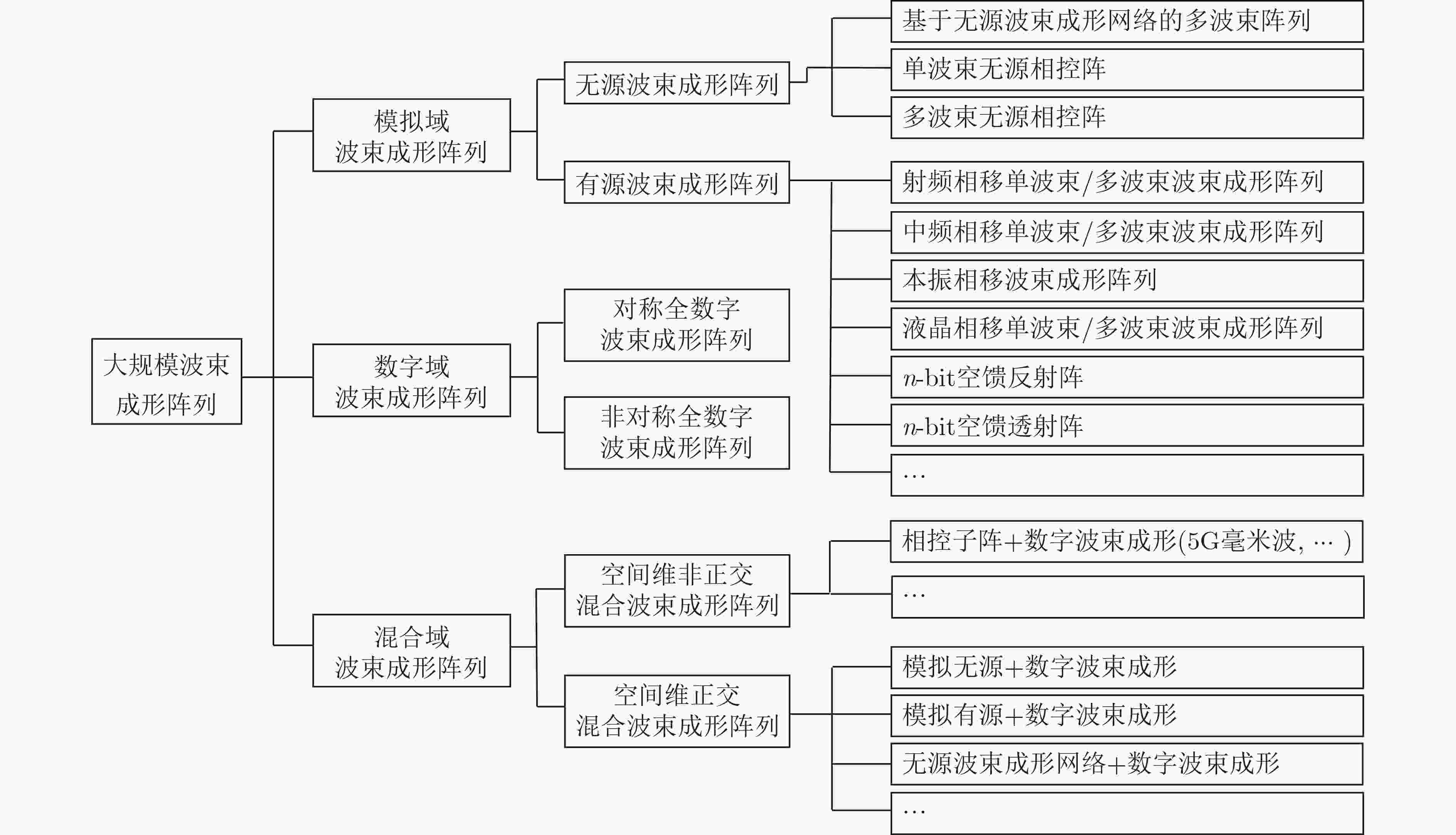
 下载:
下载:
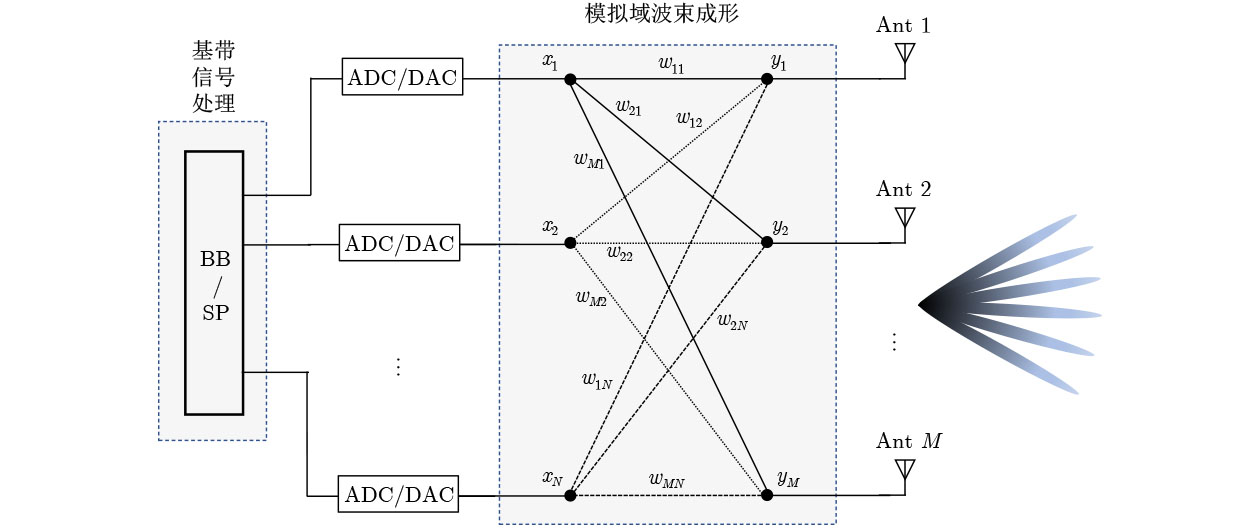
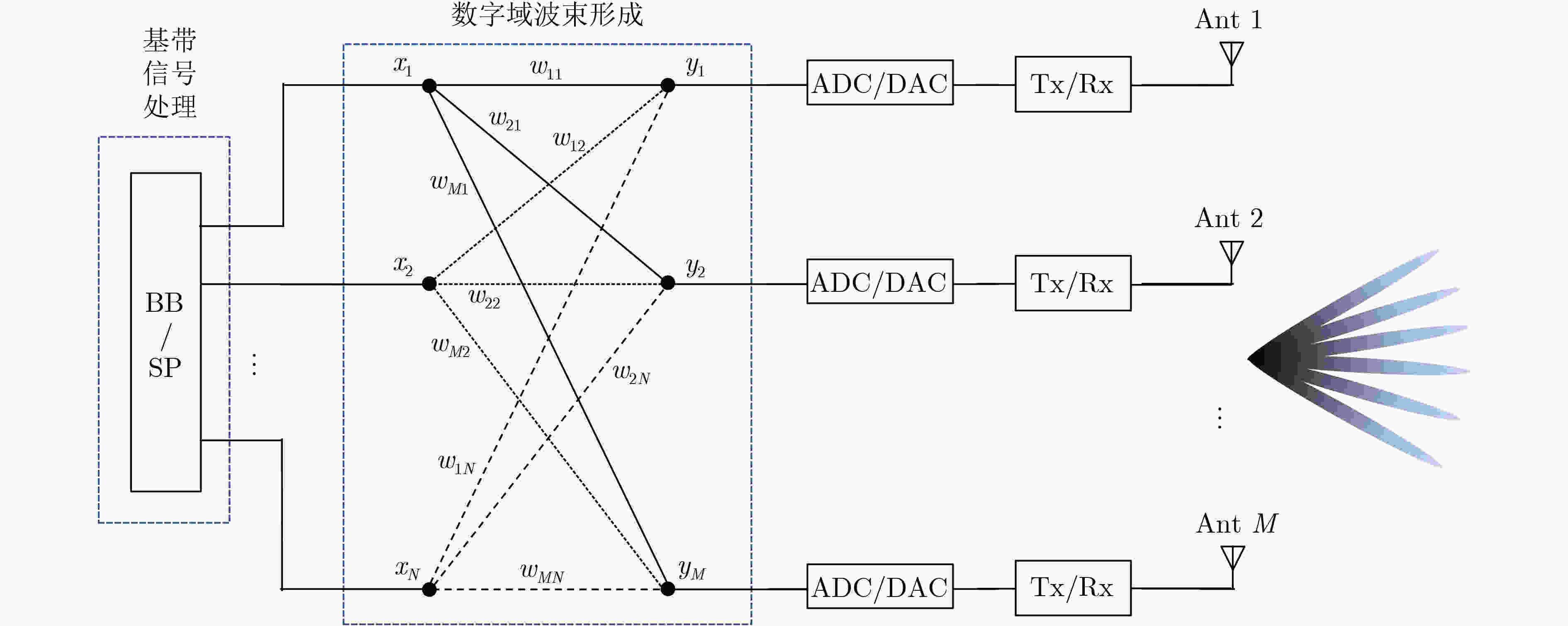

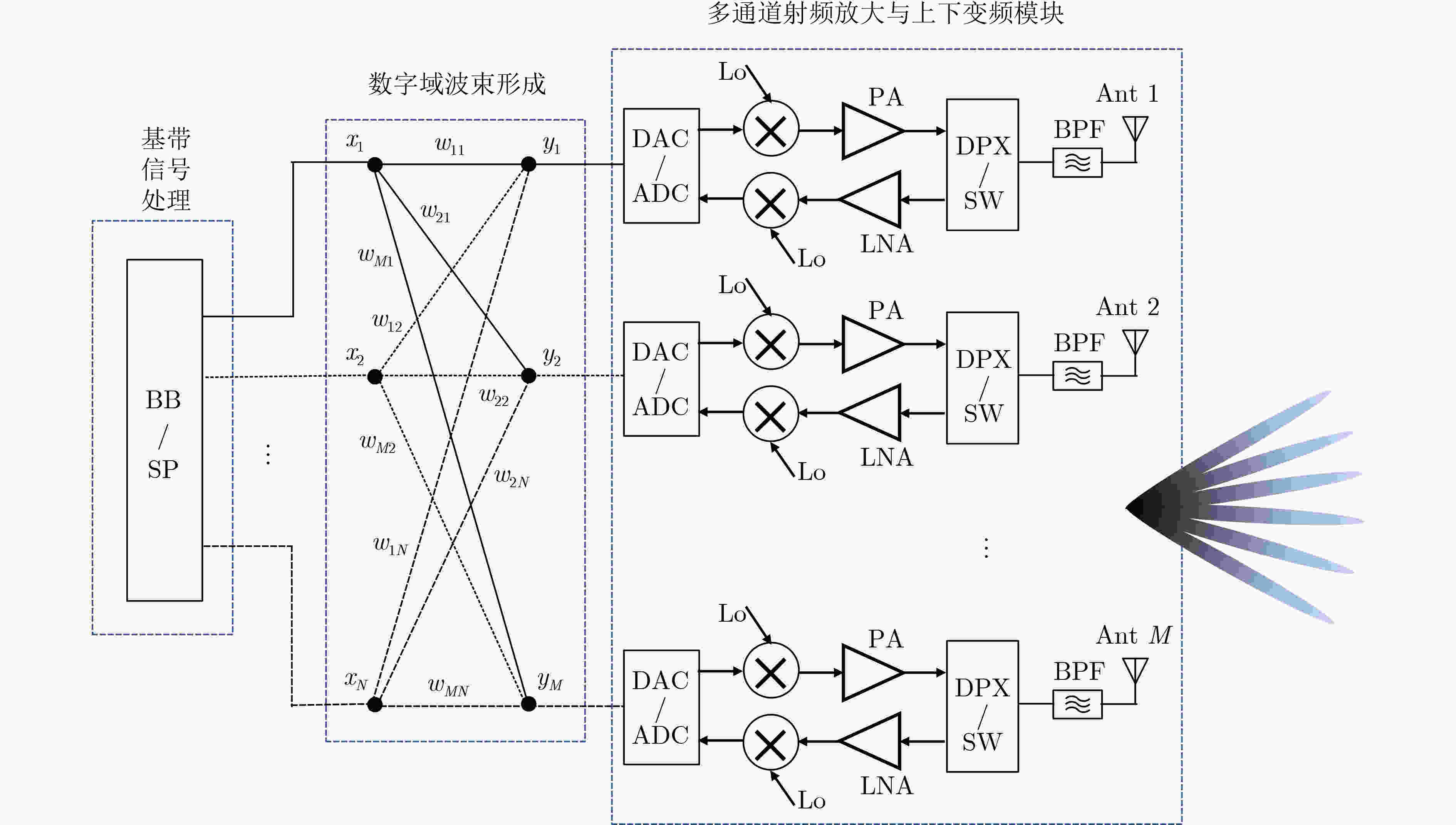

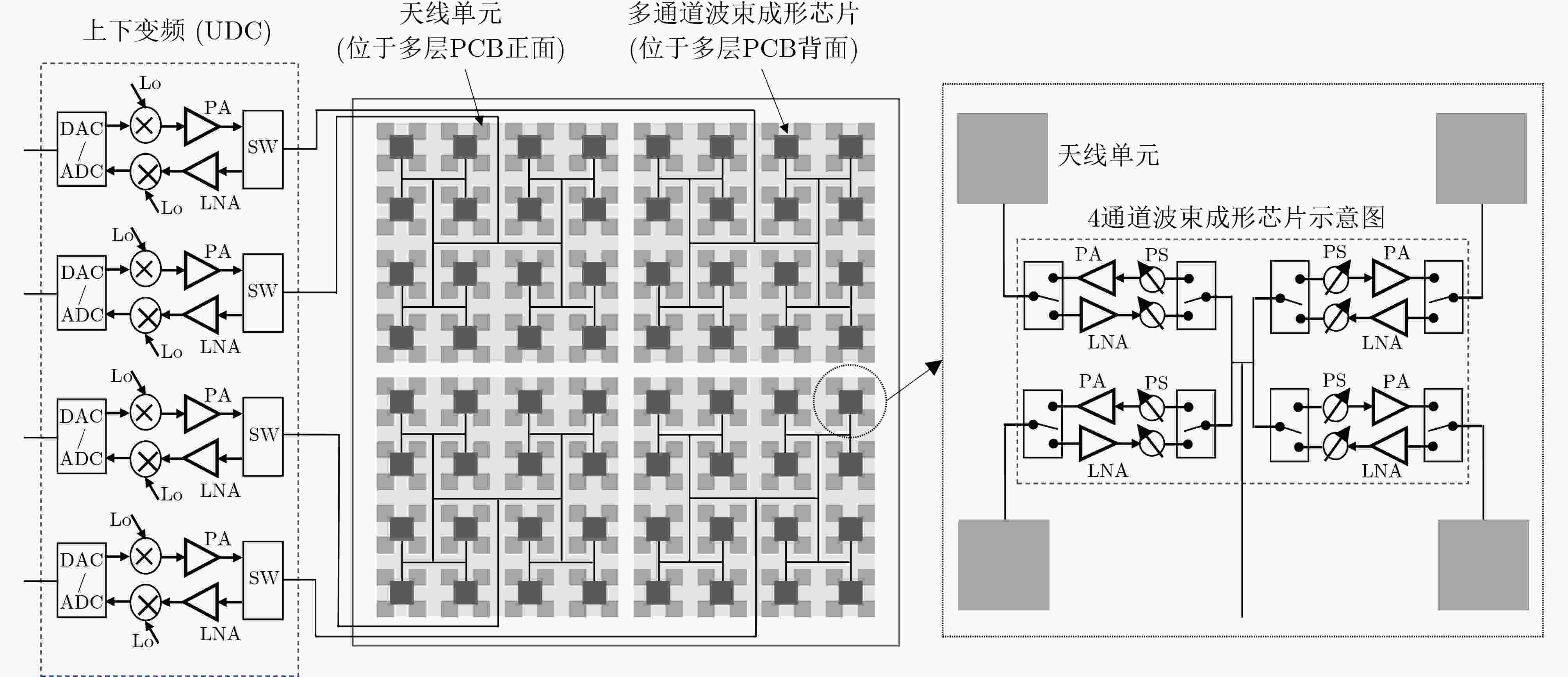
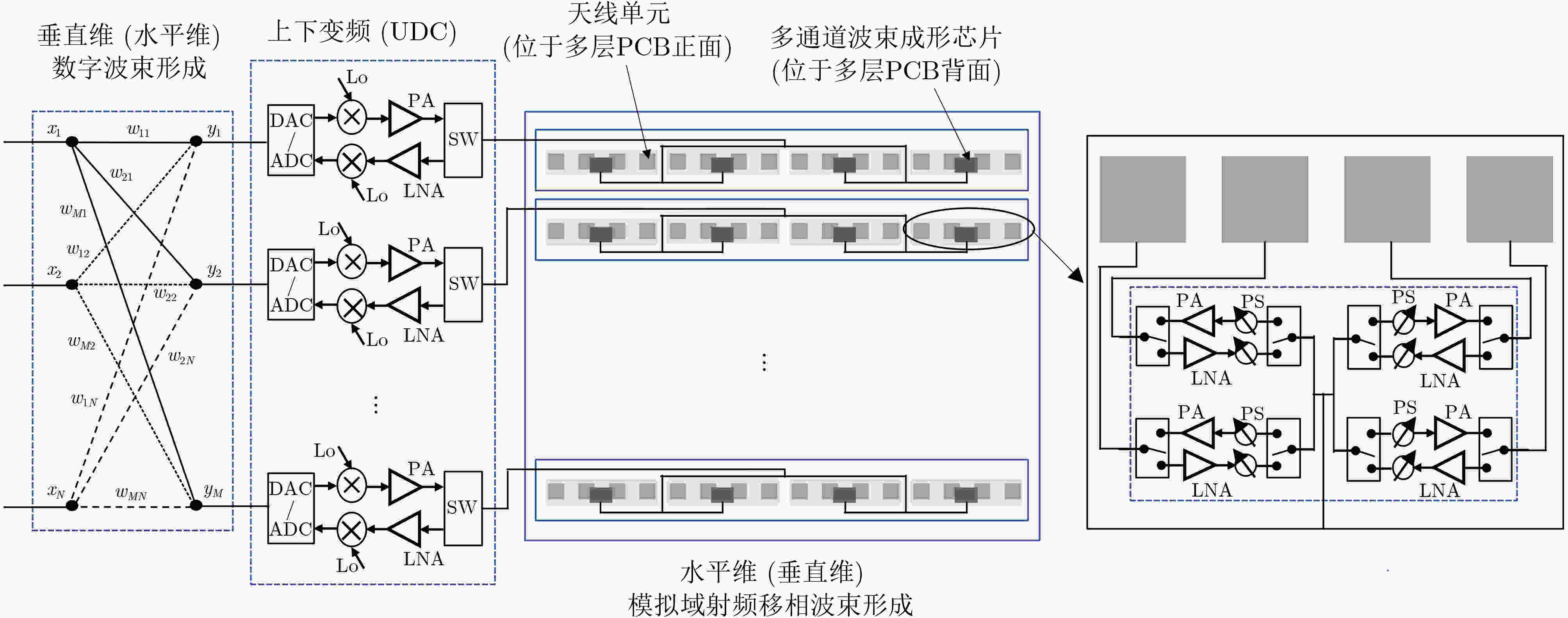
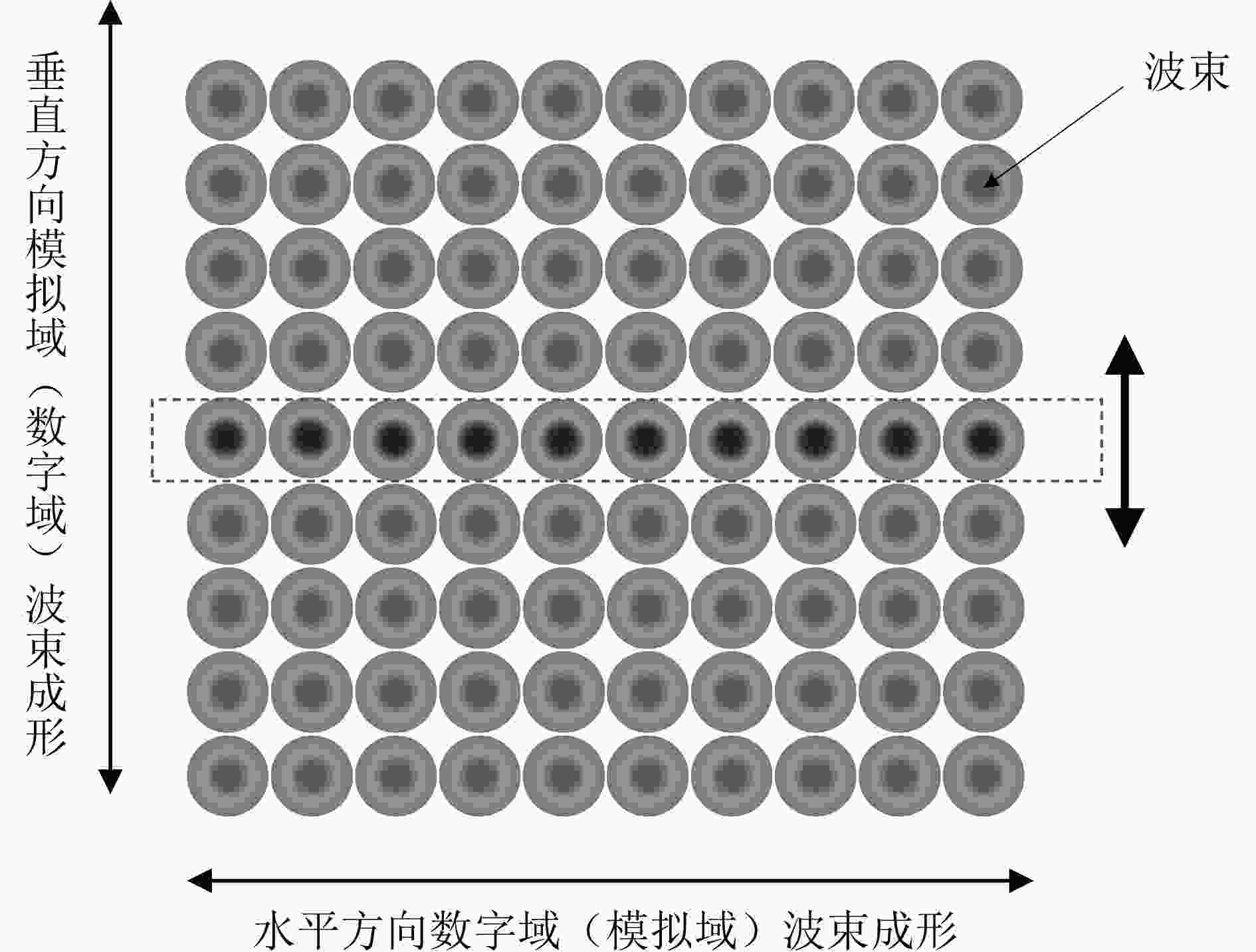


 下载:
下载:
